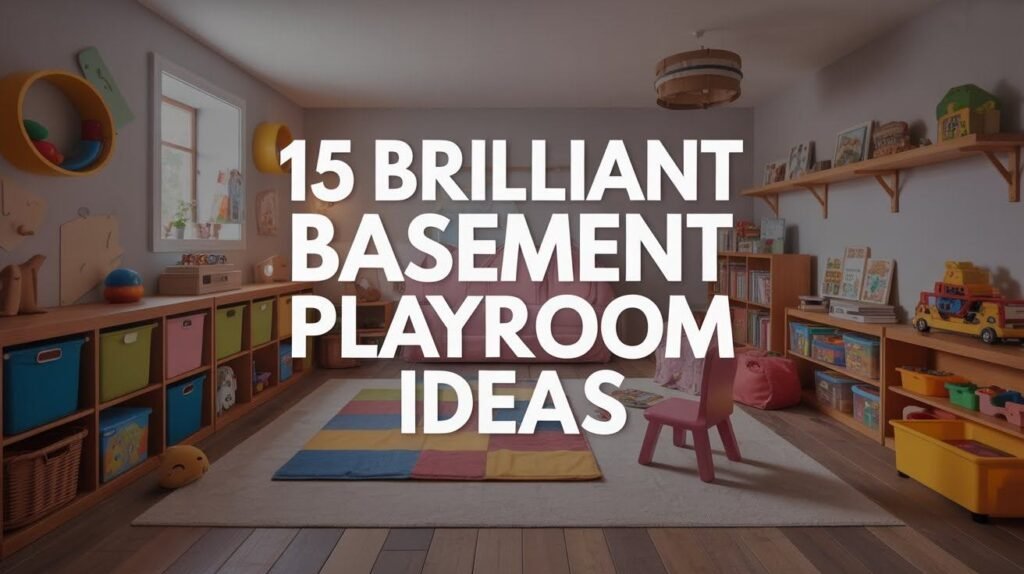Your basement holds amazing potential. It’s just waiting for the right vision to change it into something special.
A well-designed basement playroom changes everything. It gives your kids a dedicated space to play, create, and have fun. Meanwhile, it keeps the mess contained downstairs instead of spreading throughout your home.
You don’t need a huge budget to make it happen. Smart planning beats expensive renovations every time.
Think about it this way: your basement is like a blank canvas. You can create anything your family needs. A quiet reading retreat. An active play zone. Or even a combination of both.
Here’s what matters: creating zones that spark imagination while staying organized. Your basement can become the most popular room in your house.
Let’s look at 15 smart, fun-packed ideas to turn your basement into every kid’s dream playroom.
15 Brilliant Basement Playroom Ideas
A practical guide with creative solutions to turn your basement into an exciting kids’ play space. Features budget-friendly ideas from reading nooks to climbing walls.
1. Create a Cozy Reading Nook
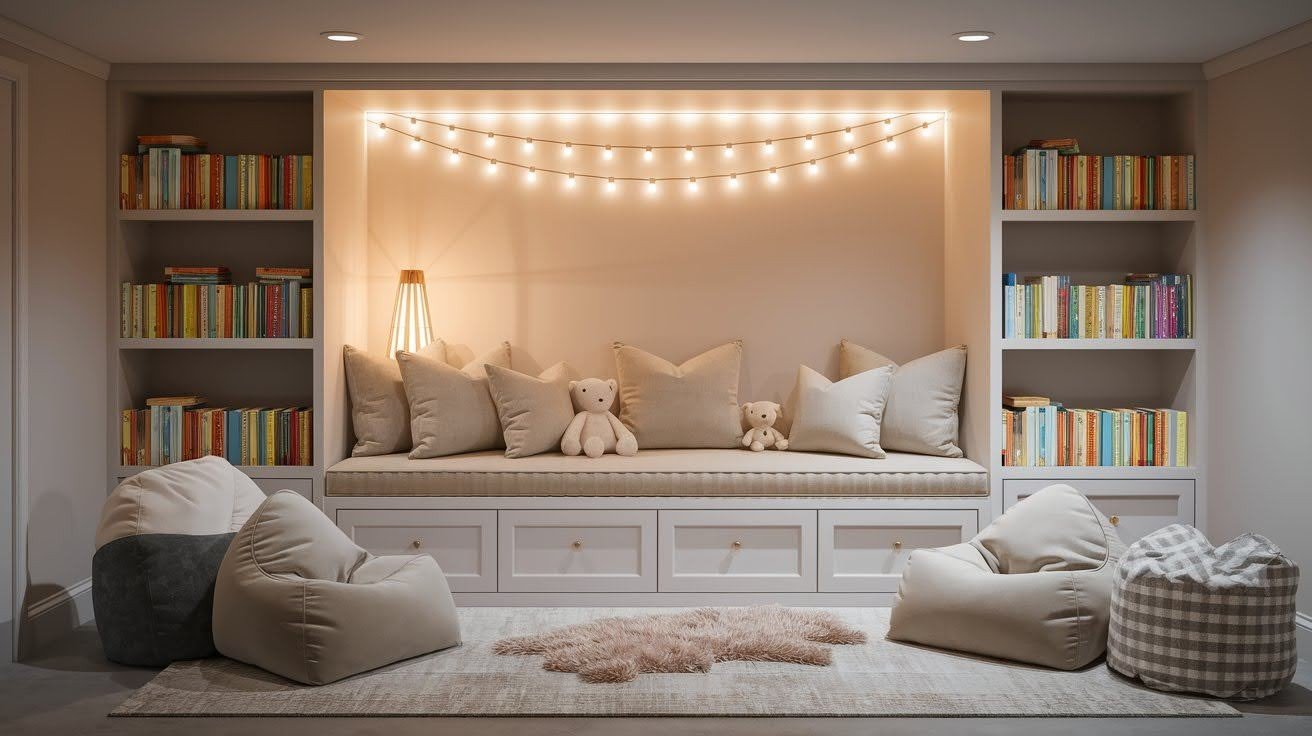
Reading time becomes magical with the right setup. Think beyond basic bookshelves.
Start with a small tent or canopy. Kids love having their hideaway. Add some colorful bean bags or floor cushions for comfort.
Low shelves work best for easy book access. Your little ones can grab their favorites without asking for help.
Consider adding string lights for a warm glow. Soft lighting makes reading feel special, not like a chore.
2. Install a Chalkboard or Dry-Erase Wall
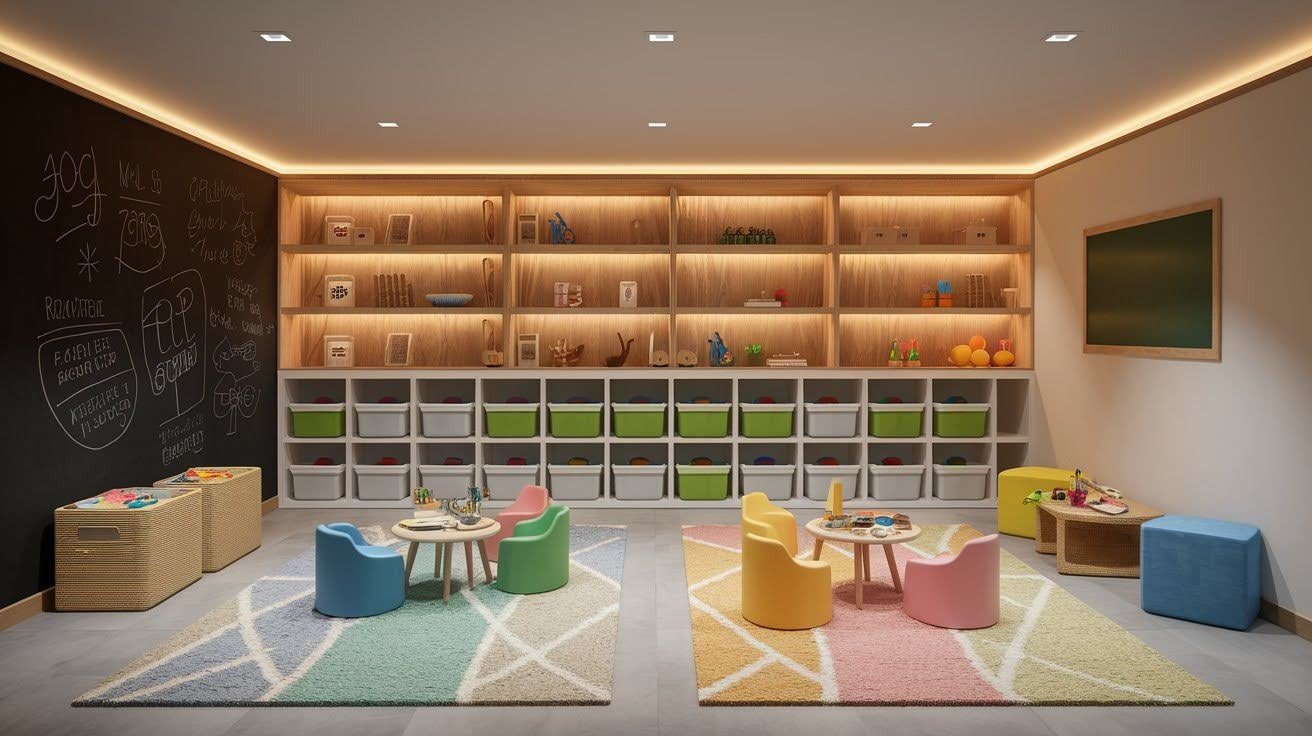
Walls become canvases with this simple upgrade. Your kids get unlimited space for their artistic visions.
Chalkboard paint transforms any wall into a drawing surface. It’s cheaper than buying multiple boards.
Dry-erase walls work great, too. They’re easier to clean and don’t create dust.
Both options save money on paper and art supplies. Plus, there’s something satisfying about drawing big.
3. Build a Mini Indoor Climbing Wall
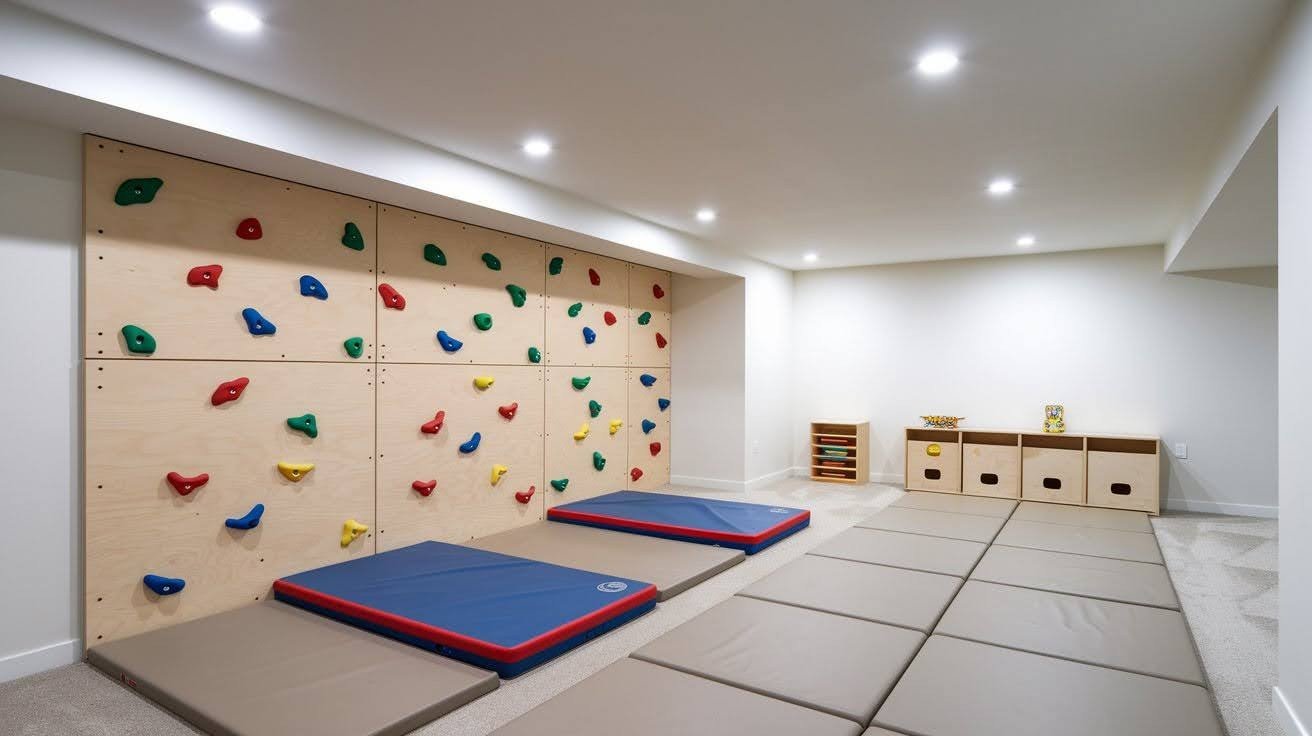
Active kids need ways to burn energy indoors. A climbing wall solves this perfectly.
You don’t need rock climbing expertise. Simple wooden holds on a slanted board work fine.
Safety comes first. Install thick foam flooring underneath. Consider adding crash pads for extra protection.
Start small and expand later. Even a 4-foot wall provides plenty of challenge for young climbers.
4. Set Up a LEGO or Crafting Station
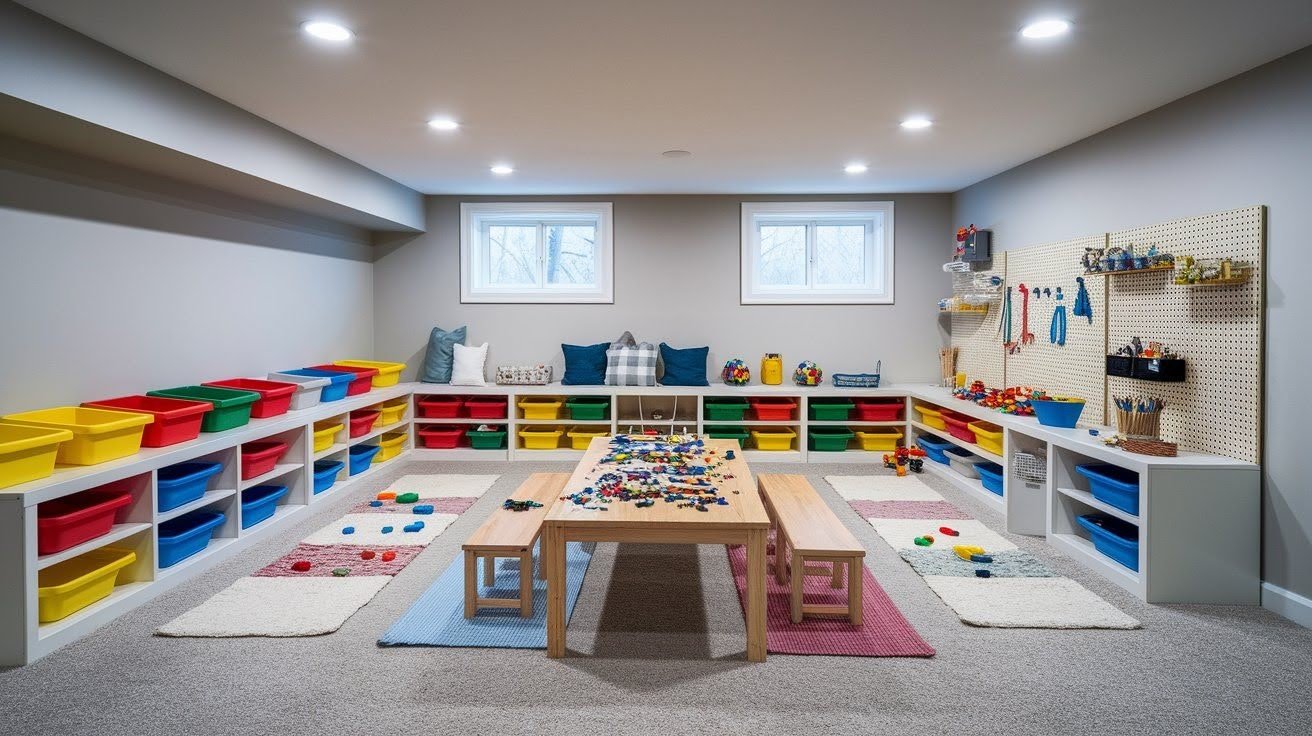
Organization makes creativity possible. Without it, projects become frustrating messes.
Use clear storage bins for easy identification. Label everything with words and pictures.
Drawers work great for smaller pieces. Kids can find what they need without dumping everything out.
Create a dedicated work surface. A simple table at the right height makes all the difference.
5. Add a Stage or Puppet Theater
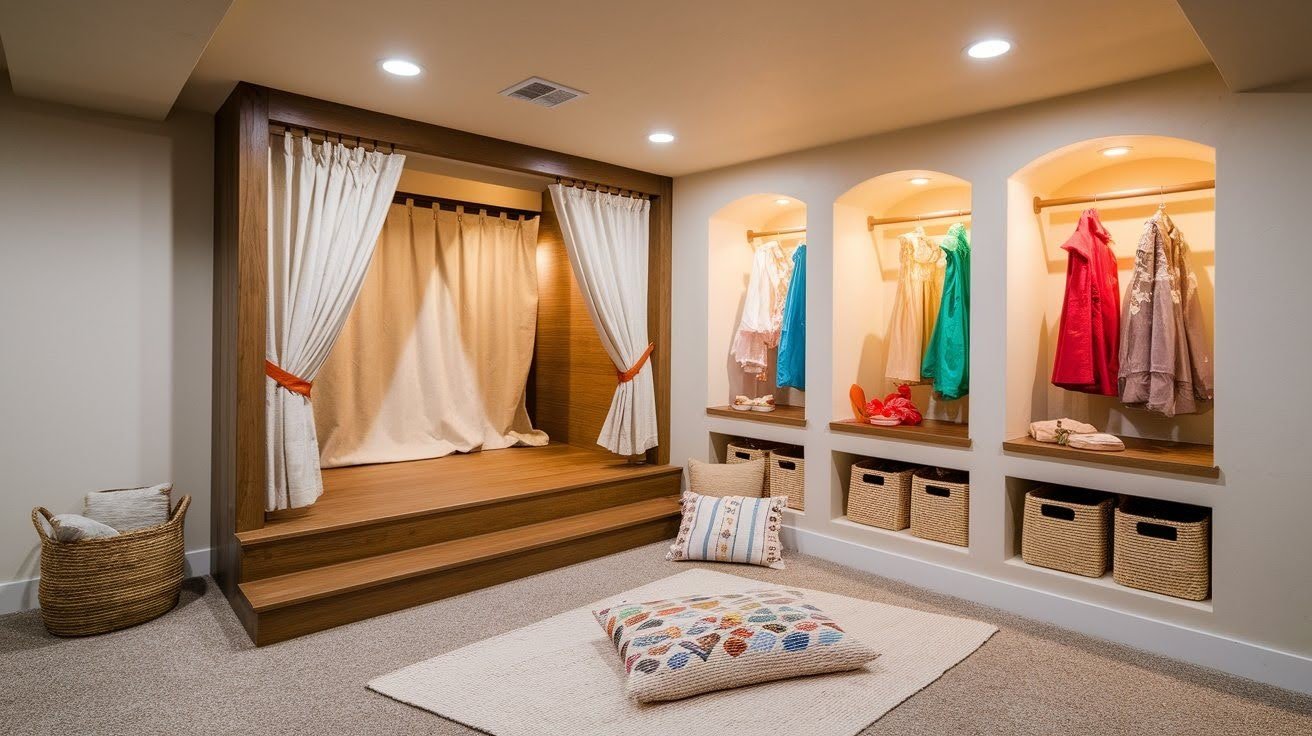
Performance sparks imagination like nothing else. Give your kids a proper stage for their shows.
A simple raised platform works wonders. Add curtains that open and close for the full effect.
Storage for costumes and props keeps everything organized. Use a nearby closet or designated bins.
Consider adding a backdrop that changes. Simple fabric panels create different scenes.
6. Use Bright, Playful Colors

Color transforms mood instantly. Basements often feel dark and uninviting.
Bright colors fix this problem. They make the space feel energetic and fun.
Paint is your cheapest tool. One weekend can completely change the room’s personality.
Don’t go overboard. Choose 2-3 main colors and stick with them throughout the space.
7. Incorporate a Soft Play Area
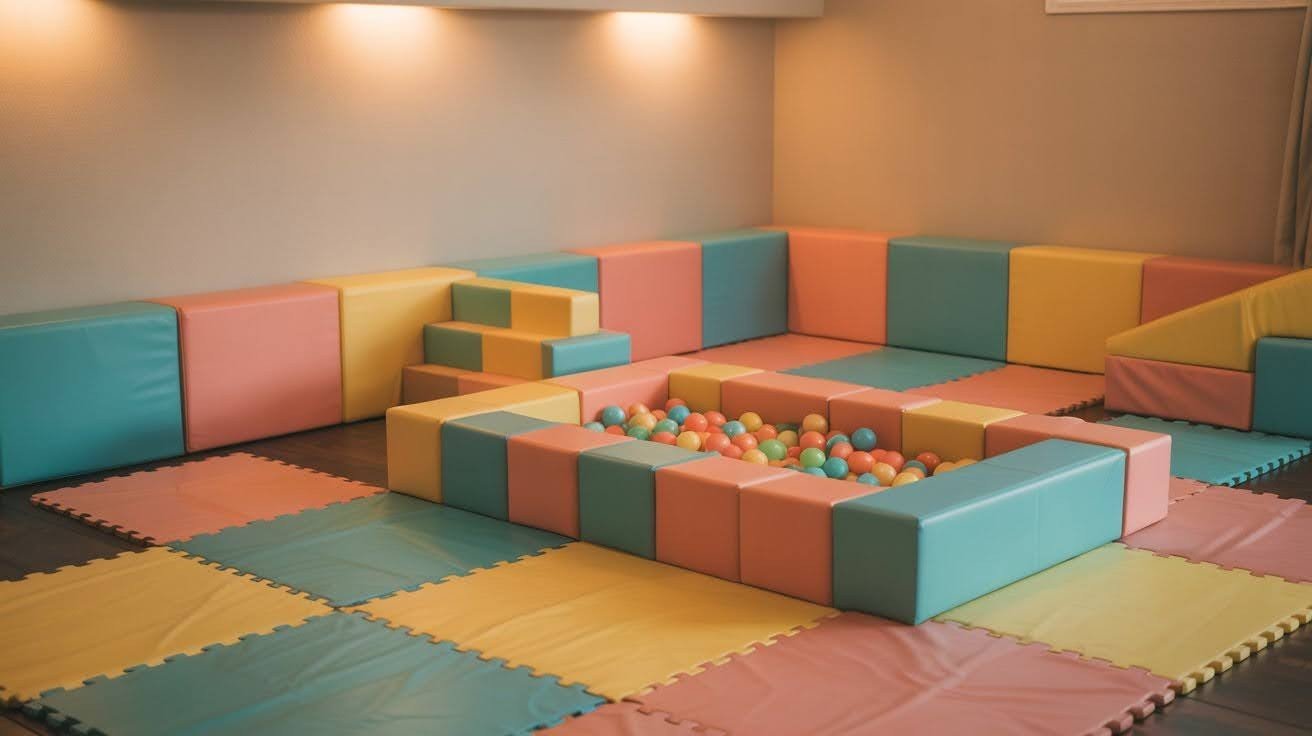
Toddlers need safe spaces to explore. Hard floors and sharp corners don’t mix well with curious little ones.
Large foam mats create perfect play zones. They’re easy to clean and provide cushioning for falls.
Consider a small ball pit or foam block area. These elements encourage physical play safely.
Washable covers make maintenance simple. Accidents happen, especially with younger kids.
8. Create Zones for Different Activities
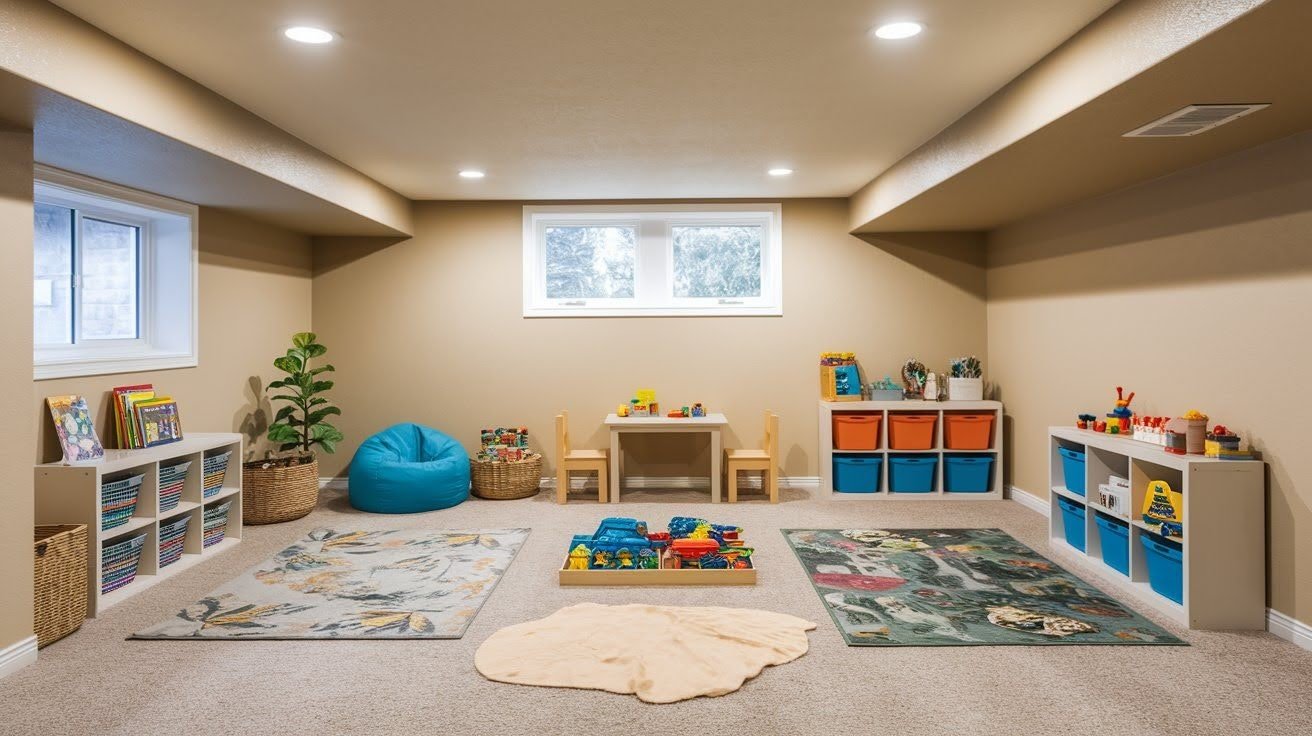
Organization prevents chaos. When everything has a place, kids can focus better.
Separate areas for different activities work best. Reading corner, building zone, art station, and game area.
Use furniture or rugs to define boundaries. Visual separation helps kids understand where activities belong.
This setup grows with your children. You can adjust zones as their interests change.
9. Install Built-In Storage Solutions
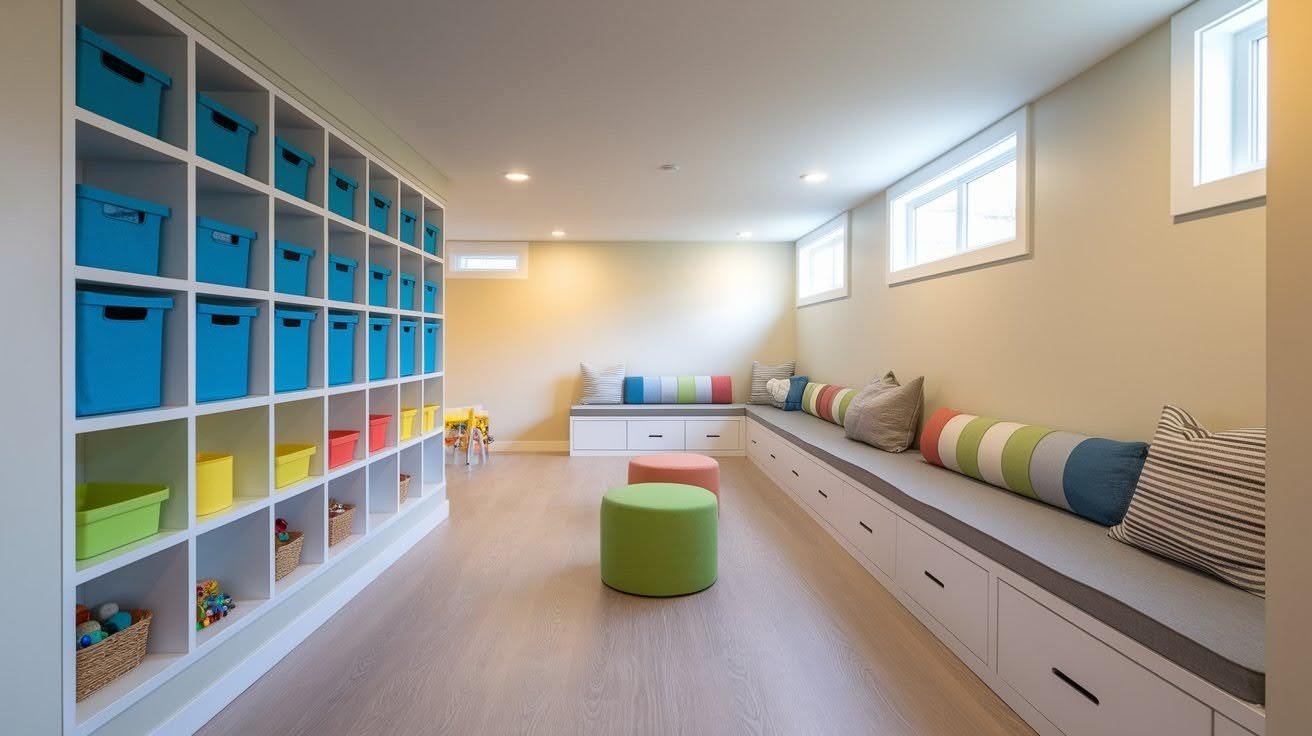
Clutter kills creativity. When kids can’t find their toys, they lose interest quickly.
Built-in storage maximizes space efficiency. Custom solutions fit your basement’s unique layout.
Cube shelves offer flexibility. You can add bins, baskets, or leave some sections open.
Under-bench storage hides mess while providing seating. It’s functional and space-saving.
10. Add a Game Table or Mini Arcade
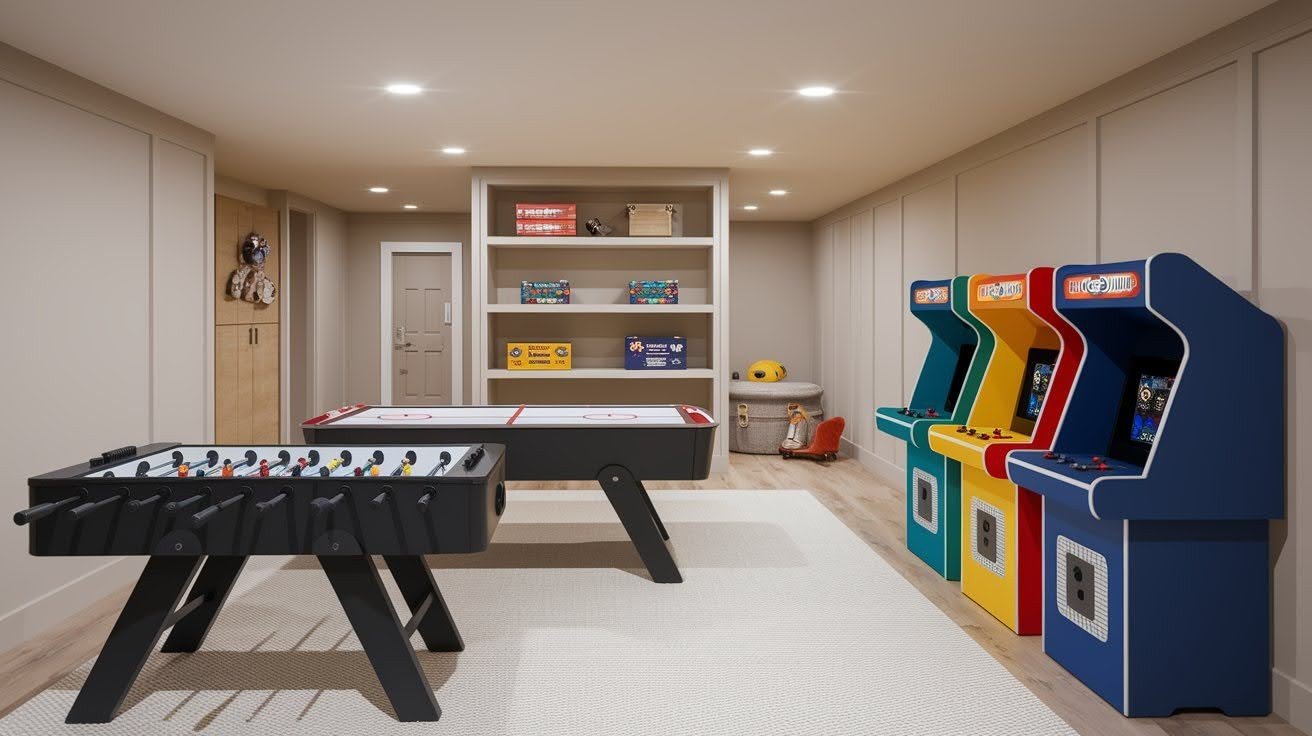
Older kids need different entertainment options. Physical games get them moving and socializing.
Foosball tables provide hours of competition. Air hockey works great, too.
Consider a multi-game table. These switch between different activities easily.
Retro arcade games bring back childhood memories. They’re conversation starters when friends visit.
11. Build a Homework and Study Zone
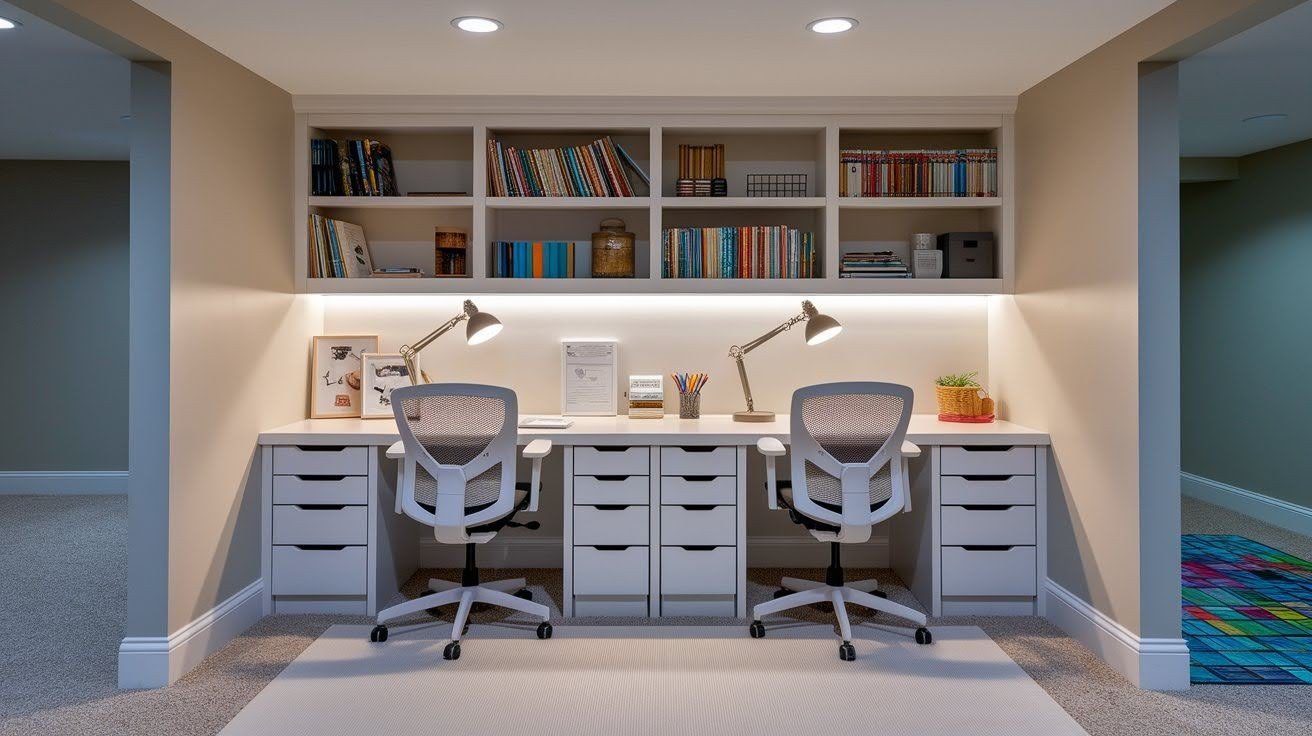
Playrooms should grow with your kids. Eventually, they’ll need quiet spaces for schoolwork.
Good lighting prevents eye strain. Natural light is best, but quality lamps work too.
Comfortable seating matters for long study sessions. Adjustable chairs support proper posture.
Keep this area separate from play zones. It helps kids focus on homework without distractions.
12. Use Washable Flooring and Paint
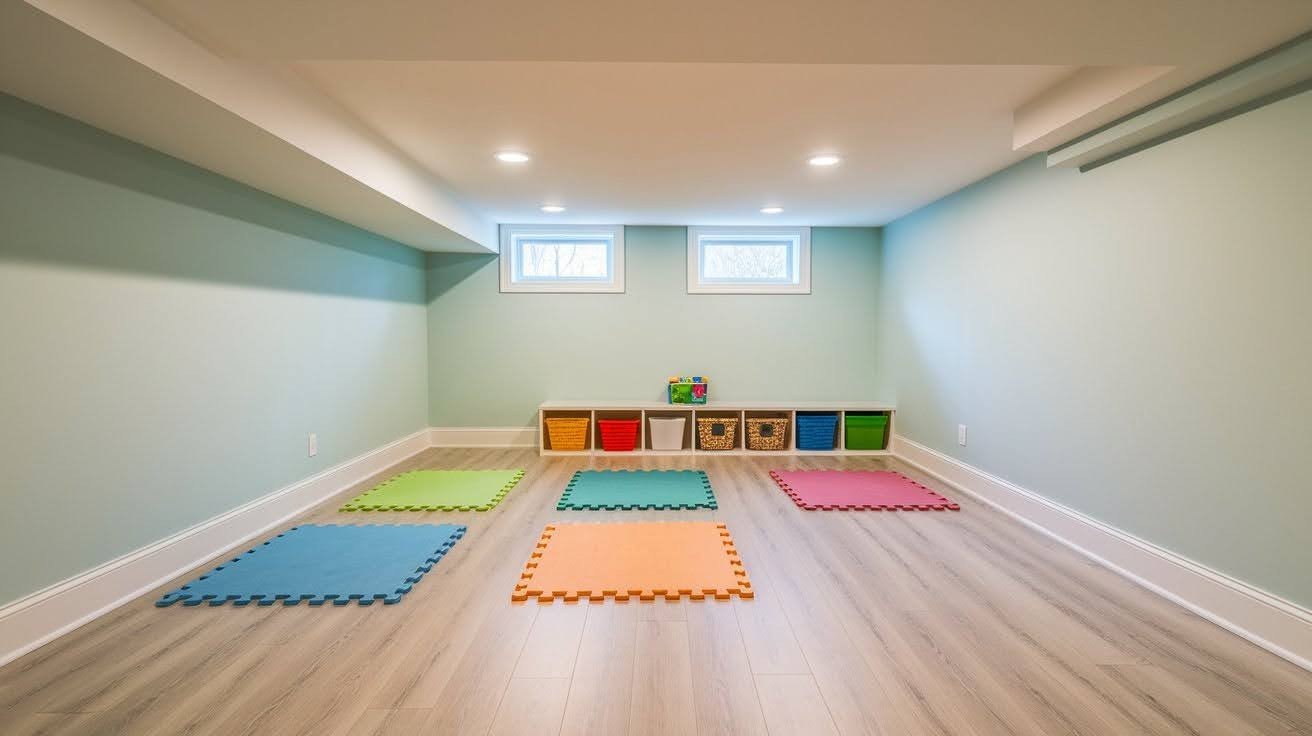
Easy cleanup saves your sanity. Kids make messes because it’s part of childhood.
Vinyl plank flooring looks great and cleans easily. It’s also comfortable underfoot.
Washable paint handles marker attacks and sticky fingers. Semi-gloss finishes wipe clean quickly.
Area rugs add warmth and comfort. Choose ones with rubber backing to prevent slipping.
13. Make It a Glow-in-the-Dark Room
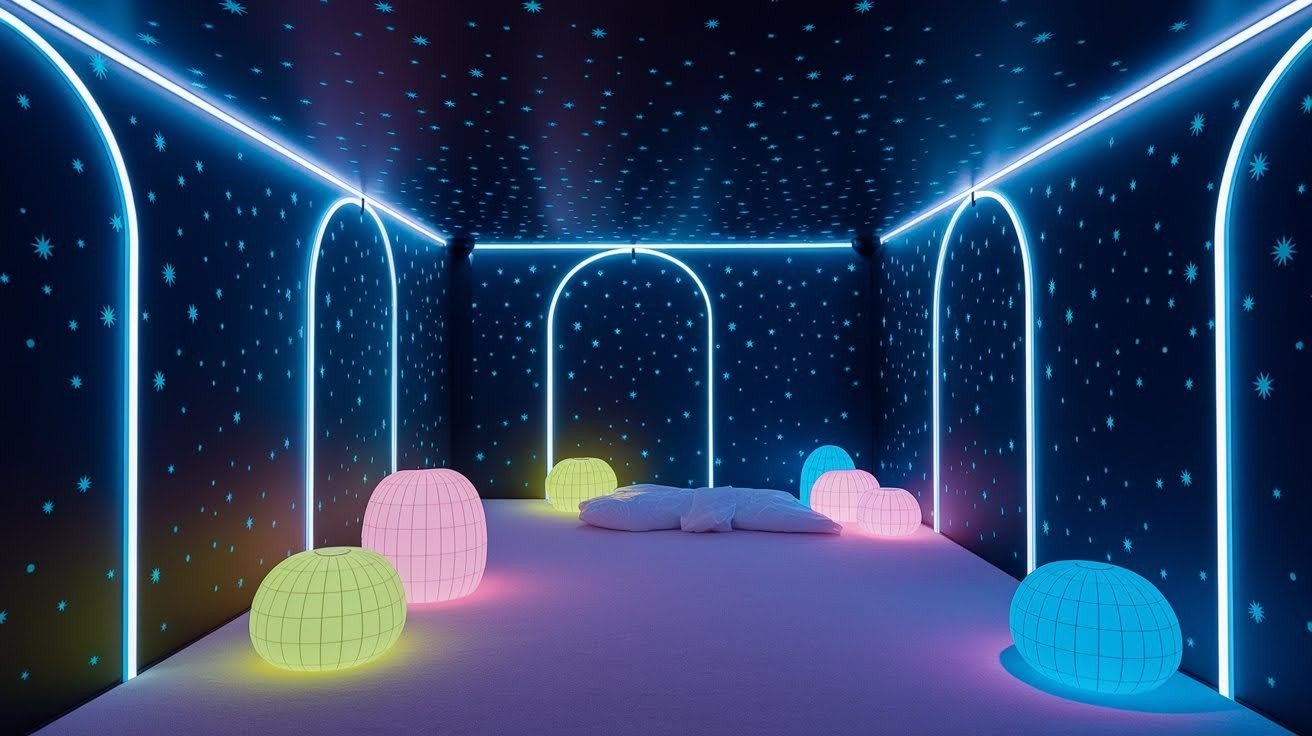
Sometimes magic happens in the dark. Glow elements create an otherworldly experience.
Glow-in-the-dark paint charges during the day. When the lights go out, the walls come alive.
Black lights make neon colors pop. They create a fun party atmosphere.
Starry ceiling decals turn bedtime into an adventure. Kids love falling asleep under fake constellations.
14. Install a Mini Slide or Ball Pit
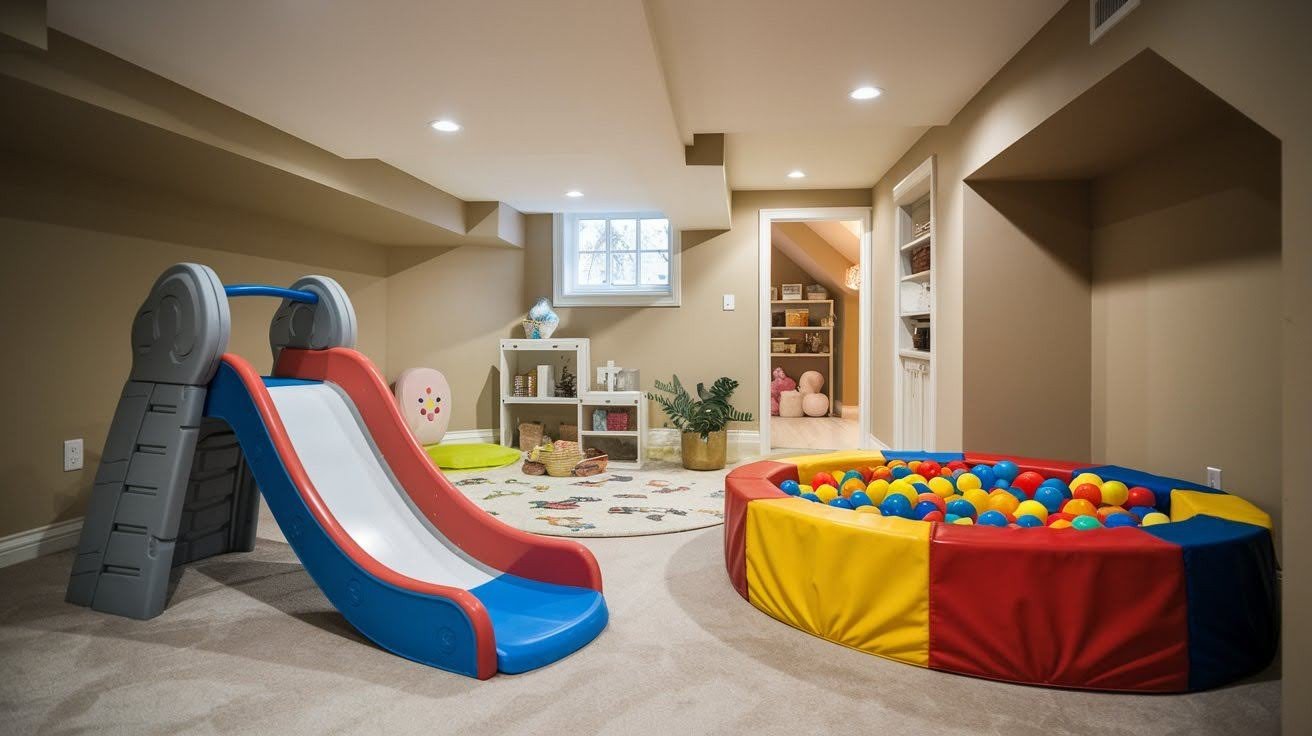
Indoor slides bring playground fun inside. They’re perfect for rainy days.
Small slides work in most basements. They don’t need much ceiling height.
Ball pits create sensory play experiences. Choose quality balls that won’t deflate easily.
Safety padding around slides prevents injuries. Soft landing areas give parents peace of mind.
15. Add Personalized Decor
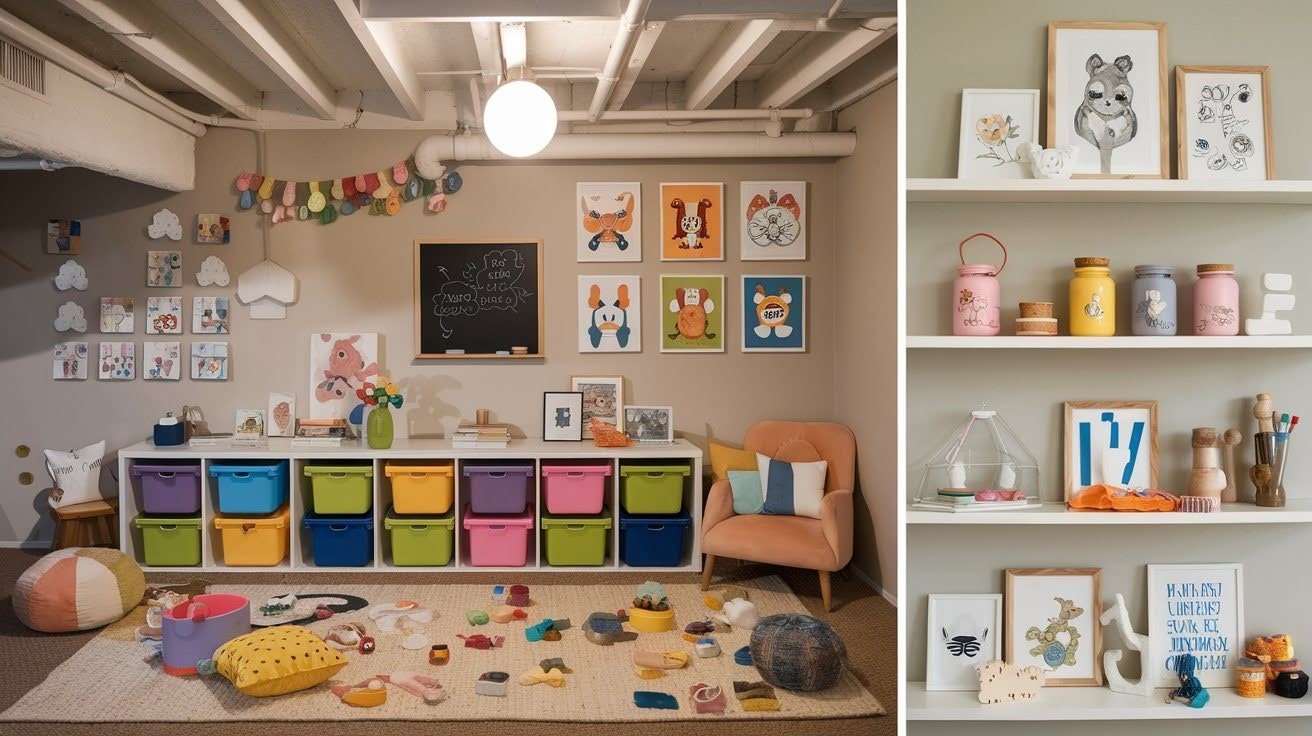
Personal touches make spaces feel special. Kids connect more with rooms that reflect their personalities.
Name signs make ownership clear. Each child knows this space belongs to them.
Favorite character themes work well. Keep decorations changeable as interests evolve.
DIY art projects add personal meaning. Display your kids’ creations proudly.
Bonus Tips
Here are seven additional ideas to make your basement playroom even better.
- Install outlet covers and cord management for safety
- Add a small refrigerator for snacks and drinks
- Use non-slip mats under all rugs and play areas
- Install a sound system for music and audiobooks
- Consider a small sink for easy cleanup after messy activities
- Add a timer system to help kids manage activity transitions
- Plan for growth by choosing modular furniture that adapts over time
Conclusion
Your basement makeover doesn’t have to happen overnight. Start with one or two ideas that excite you most.
Focus on safety first, fun second. The best playrooms balance creativity with practical considerations.
Remember that your kids’ needs will change. Design with flexibility in mind.
Most importantly, involve your children in the planning process. They’ll use this space daily, so their input matters.
Small changes create big impacts. Even adding bright paint and organized storage makes a huge difference.
Your basement playroom will become the heart of your home. It’s where memories are made and imaginations grow.
Start planning today. Your kids’ dream playroom is closer than you think.
Frequently Asked Questions
How much does it cost to convert a basement into a playroom?
Costs vary widely based on your choices. Basic improvements like paint, storage, and simple furniture can cost $500-$2,000. More extensive renovations with built-ins and specialized equipment range from $3,000-$10,000.
Do I need permits for basement playroom renovations?
Most decorative changes don’t require permits. However, electrical work, plumbing additions, or structural changes typically do. Check with your local building department before starting major projects.
How do I handle moisture issues in basement playrooms?
Address moisture problems before creating a playroom. Use dehumidifiers, ensure proper ventilation, and consider waterproof flooring options. Moisture can damage toys and create health issues.
What’s the best flooring for basement playrooms?
Vinyl plank flooring, rubber tiles, or polished concrete work well. Avoid carpet in basements prone to moisture. Add washable rugs for comfort and warmth.
How do I make a windowless basement feel brighter?
Use bright paint colors, add plenty of artificial lighting, and include mirrors to reflect light. LED strip lights and table lamps create a warmer atmosphere than harsh overhead lighting alone.

